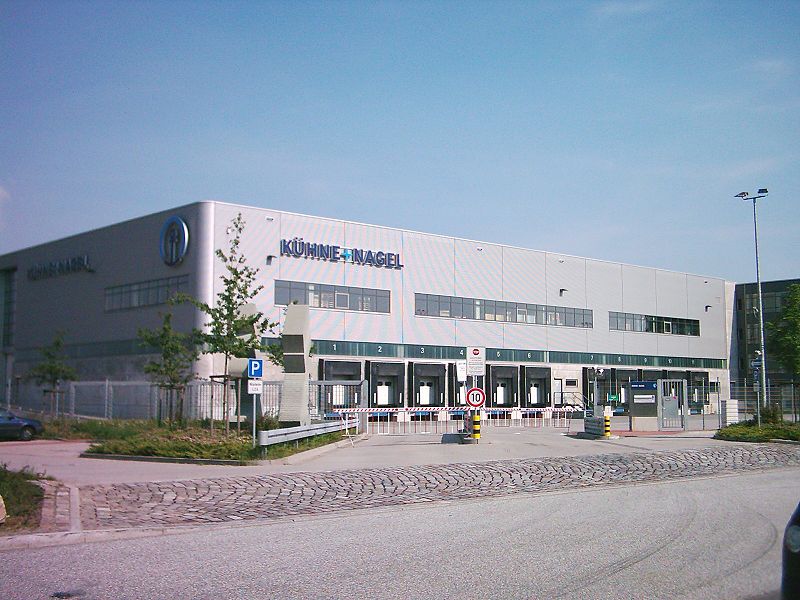Perhaps unsurprisingly (although it did surprise me, for reasons that I will explain later), I have received a lot of questions about the logistics of the Haiti response. Some of the most frequently asked questions, with a stab at some answers.
But first: although I am on standby for Haiti, I am not there, so everything that I say here specifically about the situation there is only second-hand, from what I hear from friends and colleagues and from what I read in the media.
And secondly: this is not a crash course in emergency logistics, nor will it be very helpful for the logisticians who are there or will be going there. If anything that you read here is new to you, you have no business of going to Haiti as a logistician (unless you will be supervised there by people who do know).
Why is logistics in Haiti so much more difficult than in other disasters?
It isn’t. Really, not at all.
Every sudden-onset disaster causes similar logistics problems. The 2004 tsunami, the earthquakes in China and Iran, even hurricane Katrina in the US: in all of these cases logistics was the main limiting factor for aid.
A painful truth that you will not hear spelled out very often: emergency aid in these circumstances is totally dependent on local preparation, and any aid that that will come from outside the area will be largely ineffective until the logistics has been cleared up – which is usually only after several days in the most favourable circumstances. This is why disaster preparedness is so important, and it is also a main reason why countries like Haiti, which don’t have much capacity for disaster preparedness in the first place, are always so badly hit when the (inevitable) disaster strikes. It is also why expectations of what aid will accomplish over the next couple of days should not be set very high (and why twits like this guy, or this nitwit, should seriously shut up until they know what they are talking about – and that I use these harsh terms here, which I have never done before, should say something).
So why do I hear so much more about logistics now than in previous disasters?
I think you are asking the wrong person (I am a logistics specialist and have no clue about media), but I have observed two parallel developments over the last couple of years that might have contributed:
- For the second time in the history of modern of humanitarian aid (the first time was in the early 1980s), aid organisations have been refocussing on logistics as a core competence for aid. Especially the 2004 tsunami was a rude shock for many established organisations, who had become complacent about their logistics capacities and had stopped investing in it – and as a result operated at (to put it in friendly terms) less than optimal levels of effectiveness. Since then, logistics capacity is again increasingly seen as a sine qua non for effective aid, and emergency aid organisations are (again) talking about it as a key competency – also to the media.
- Also outside of the organisations themselves, people started to become interested in humanitarian logistics, and there has been much more coverage of it. Recently there have been a number of books on the subject released, universities have started taking an interest in it as a subject of serious research (and teaching), aid watchers have put the occasional spotlight on aid logistics, and bloggers have started writing about it (with even the occasional blog totally dedicated to the subject). All this has contributed to more attention in the press and the public at large to aid logistics, and I think we now see the first results in the huge attention for the logistics in Haiti.
In that case, what are the main logistics challenges in disasters like this?
Remember, logistics is all about the five rights: the right goods, in the right quantity, to the right place, at the right time, at the right price. One of the main issues here (and one that I have seen very little coverage of) is that in a chaotic situation like this we just don’t know what are the right goods, the right quantities, or even the right place. Needs assessment is incredibly difficult, especially in view of how difficult it is to access some areas.
“So”, I hear you say, “just send as much as possible of everything, and we’ll sort things out later”. That would be a very nice idea, if we weren’t already struggling with overburdened and disrupted infrastructure (more about that later); everything that we send that is not needed, means that we cannot send something that is needed. This is a precarious juggling act, and although logisticians have some tools to deal with it (e.g. the much-vaunted kit system, a development from the 1980s first aid logistics revolution – but one that is nearing the end of its shelf life, for reasons that I will explain at some other time), it is still the major forgotten logistics challenge.
Furthermore, unused goods can become a serious liability after the crisis; e.g. the Indonesian government had to spend untold millions of dollars on disposal of unwanted goods after the 2004 tsunami, causing a serious burden on the reconstruction.
A second issue that is under-reported, is the logistics of logistics: logistics is an immensely fuel-hungry venture (think cars, think trucks, think planes and helicopters, think generators), and getting the fuel where it is needed is not easy. In this sense, Haiti will probably be rather easier than most crises, due to the proximity of two of the largest oil producing countries in the world, and the largest navy fleet in the world; expect one or more of the US Navy’s Brobdingnagian supply ships to turn up soon with large fuel stores.
A third main issue is the wide-spread destruction of physical infrastructure. Port-au-Prince’s harbour at the moment is effectively useless, the airport (not one with a very high capacity in the first place) is damaged, and roads are destroyed and blocked. Large transport helicopters would be immensely helpful but are by far the most fuel-guzzling mode of transport (there we go again with the juggling act) and are not that easy to get there because of their limited operational range; e.g. an Mi-26 (carrying 20 tonnes) ranges only 800 kilometres, which can be extended to 1900 kilometres using additional fuel tanks – but that would seriously impact on its load carrying capacity.
In the fourth place, communications will be difficult. Over the last years, aid organisations have become more and more reliant on telephone communications, and these will be disrupted and overburdened. Many organisations have lost their expertise in radio communications (five years ago, I could program and set up a Q-mac, a backpack-sized mobile HF transceiver, in ten minutes flat, three minutes if it was pre-programmed; I now would need a manual and at least 30 minutes), and many of their staff have no clue about radio protocol – which sounds boring but is absolutely necessary to prevent total chaos on your radio channels. As a result, communication will be a real challenge.
Fifth is coordination. There will be such a host of different organisations on the ground that it will be difficult to ensure that we don’t duplicate efforts (well, duplicate as little as possible). Even more important is to avoid hindering each other, e.g. by using the available infrastructure inefficiently, causing congestion. This is one of the reasons why I would seriously suggest smaller organisations and individuals (especially those that have no previous experience in emergency response) to stay away and not even consider going there before the third stage response starts to set in (probably in about two weeks). For the people on the ground, this means going to coordination meetings. People who have worked with me know that I mostly consider these as a waste of time (I think using personal networks is almost always much more effective and efficient) – but the one main exception is during the first phases of an emergency response. So yes, even in situations like this, humanitarian logistics will involve long hours in airless rooms trying to come to agreements and exchanging information; sorry to prick your romantic bubble.
Update January 17, 10 AM AEDST Apart from going to the coordination meetings, of course it is essential that aid logisticians use and contribute to the information on the log cluster web site.
And then there is the longer term to think of. Decisions taken now can have serious repercussions later, and this is something that every loggie worth their salt will continuously have in the back of their mind. The last thing you want to happen is saving a life now, but costing multiple lives later on in the response.
Apart from these six primary ones, there is a host of secondary issues that I will not bore you with, but that will cause my colleagues in the field more than one heartache.
Any good news?
Well, I already mentioned the proximity of Venezuela and the US. One other thing that will make my colleagues’ lives a bit easier is that, although the number of victims is staggering, the geographical spread of the disaster is relatively limited (compared to e.g. the South China, Pakistan, and Iran earthquakes), so once we can get them there and the fuel issue is solved, widespread use of helicopters actually is a realistic option. And finally, the neighbouring Dominican Republic has been spared the worst of the disaster and can be used as a staging ground for the response.
So what can I do?
For this stage of the response, not much. Donating money (not goods!) to a reputable aid organisation with expertise in emergency response and a pre-existing presence on the ground might help for the longer term, but in the short term the needs seem to be met. Keep on giving, but with an eye on the longer term.
Don’t go out there. You cannot help and will only be a burden to the people who can. The only exception is if you are a humanitarian or military logistician with experience in emergency response, in which case I would suggest that you contact the organisation with which you have worked before (other organisations will not have time to vet your credentials and will use their own roster of experienced people).
And finally: spread the word about these issues far and wide, so that people start giving for emergency preparedness and not only the response; including the building of capacity within the aid organisations, like expertise at HQ level. This is one of the reasons why aid organisations spend money on ‘overhead’, and why it is so silly to judge aid organisations by the percentage spent on overhead.
Finally, comment freely in the comments section, and don’t hesitate to ask questions.
Updates
January 18, 1 PM AEDST
- WFP is contracting to get the fuel situation solved.
- US forces have taken over traffic control of the Port-au-Prince airport, but ther are some questions about how they set priorities.
- Security issues are now added to the list of logistics issues: there are reports of looting (especially at night) and the UN is recommending that aid convoys be secured by armed personnel, but there is some disagreement on how widespread and serious this actually is.
January 18, 4 PM AEDST
According to WFP, repairs to the south pier of Port-au-Prince’s harbour are underway. Informally, I have heard that some ships might be able to dock by Tuesday (local time); if that is true, that would be very good news!
January 19, 3 PM AEDST
- The informal information I received about the opening of the harbour now seems to be confirmed officially.
- Until the harbour opens, the airport remains one of the main bottlenecks. Conflicts about priorities are now fought out over Twitter, which I can only be very unhappy about: this is a triumph of the loudest voice instead of reason. Perhaps MSF’s flight should have gotten highest priority, but getting that about by flooding the USAF Twitter account is not the way to go — and I am afraid that this tactic will actually be detrimental to MSF’s interests and, more importantly, their patients’ interests in the long term.
- In general, more and more aid does seem to get to the people who need it. This, again, follows more or less the normal pattern: as logistics bottlenecks are solved and needs are assessed, the ‘pipeline’ widens and lengthens and items are getting where they are needed.
January 19, 5 PM AEDST
WFP logistician and aid blogging guru Peter Casier, on his way to the Dominican Republic to head WFP’s logistics operations there, confirms that the fuel contract was obtained yesterday and that the first fuel truck already arrived in Port-au-Prince. This will take a lot of pressure from the logisticians there.
January 20, 11 AM AEDST
- Director of communications for MSF-Canada, Avril Benoît, takes me to task on Twitter: she says that the concrete impact of the “Twitter agitation” is exaggerated and that Twitter is only a small part of MSF’s media advocacy. That might be so, but that does not negate that it was a poorly conceived idea that sets a precedent for future similar campaigns with even less reason. It will also not have made MSF any friends at the place where it matters: the people making the hour-to-hour decisions based on the priorities set — which put medical supplies only at fourth place, for reasons that one might disagree with but that are definitely not total nonsense.
- As expected, the South pier of Port-au-Prince harbour can now receive geared ships and barges; however, the container terminal is still inoperative and remains so for the near future.
- UNHAS has contracted a 12 mt plane that will start a cargo shuttle between Santo Domingo and Port-au-Prince.
January 20, 11 PM AEDST
- WFP starts a cargo shuttle between Santo Domingo and various sites in Haiti.
- Apparently coordination on the ground between aid agencies is fairly good compared to earlier large-scale disasters. However, this is a second-hand impression gleaned from a very limited number of people, so it could be totally incorrect.
{










